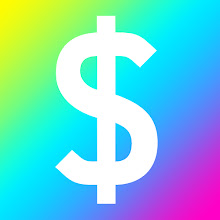This article originally appeared in the Chicago Tribune, by Beth Finke. Ms Finke illustrates a compelling vision of what it means to be brashly overlooked by our government and it's reluctance to simply fix the functionality of the US currency to make it easier for the visually impaired to use.
"I'm a published author. I fly around the country with my Seeing Eye dog to promote my books at schools and libraries. I appear at bookstores. I speak at conferences.
When we travel, Hanni – a golden retriever/Labrador cross -– guides me onto a shuttle to the airport. We manage our way through security at O'Hare International Airport, find our way down the jetway to our seats, get to baggage claim when we arrive at the next airport, hail a cab to our destination. I'm proud of my independence.
But you wanna know one thing I always need help with? Paper money. Dollar bills in my wallet are folded every which way to help me remember which is which. Twenties are folded in half, tens down to three-quarter size. Fives get the end folded into a triangle and singles I just leave be. I have to trust cashiers not to cheat me – I ask them to call out each bill as it's placed in my hand, then make them wait as I fold it and put it in my wallet.
Nearly180 countries use print paper money, and the U.S. is the only one that prints bills all the same size and color, no matter how much each bill is worth. Last year a federal appeals court ruled that the U.S. currency system discriminates against blind people. The court decision was not a unanimous one, and some high muckety-mucks weren't exactly happy with the ruling, either. The National Federation of the Blind, for example. NFB strongly opposed the 2002 lawsuit that led to the ruling. It figures that most blind people have found ways to cope with paper currency and say there are other, more pressing needs to address.
Then-Treasury Secretary Henry M. Paulson testified against it too. He said the blind can function fine using credit cards or electronic scanners to identify different bills, and if that didn't work they could rely on help from others.
The NFB and Paulson do have a point. In the 20-plus years I have been blind, I have never been shortchanged by a cashier. Even Chicago cabdrivers – who have an undeserved reputation for being rude – have been honest with me, correcting me when I've made mistakes and tried to pay them too much.
Still, I feel pretty stupid sometimes when a bill unfolds itself, or gets mangled in my wallet, and I have to ask what money I'm carrying.
Changing the size or shape of U.S. currency wouldn't cost the Treasury much more than the changes it made in 1996 and 2004 to deter counterfeiting. The new system would not necessarily have to use Braille -- an embossed stripe on the $5, two stripes on the $10, that sort of thing would suffice. The American Council of the Blind has suggested distinguishing bills of different amounts by changing their size, adding embossed dots or foil to the paper or using raised ink.
The court case is supposed to pave the way for a future redesign of American paper bills, but the jury (literally) is still out. It's up to the federal government to decide whether to appeal the case to the Supreme Court. Until then, I guess those of us who are blind will have to continue relying on the kindness – and honesty – of strangers.
Beth Finke is the author of "Hanni and Beth: Safe & Sound."





No comments:
Post a Comment